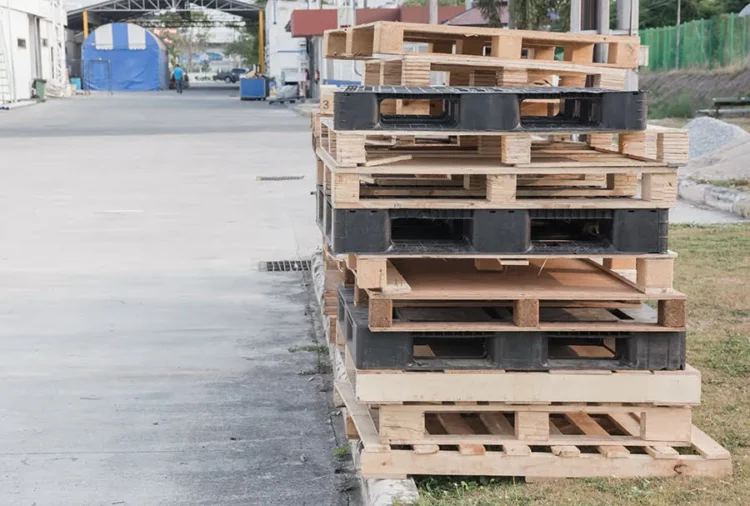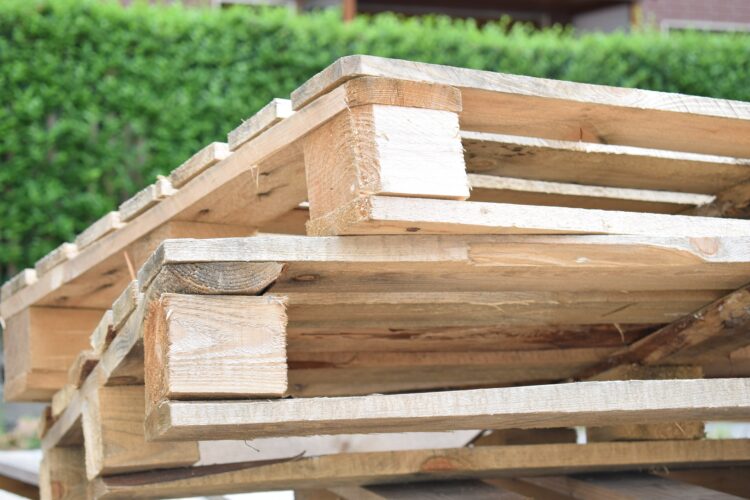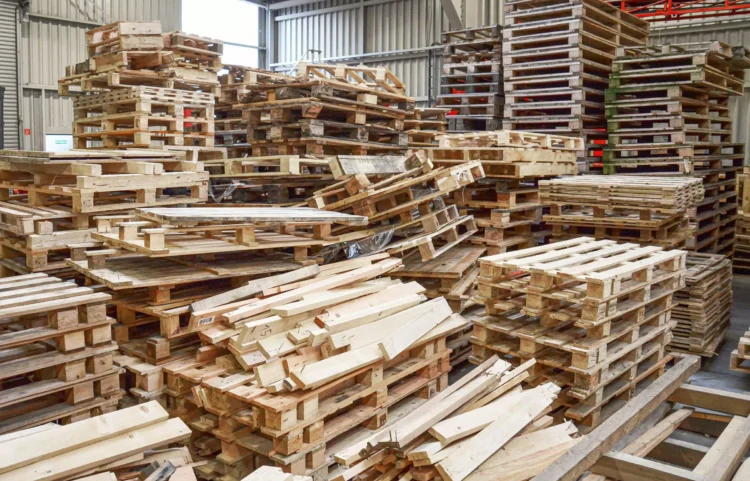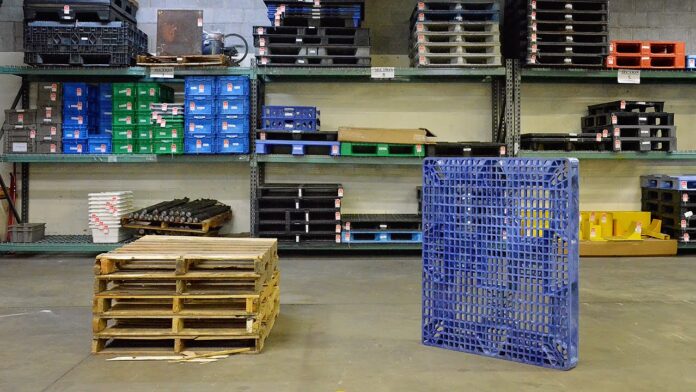When it comes to shipping and transporting your products, it’s time to get picky! Not all pallets are created equal – so when choosing between wooden or plastic pallets, the decision is not as clear cut as you may think. In this blog post we’ll cover the various factors you need to consider when selecting between wood and plastic pallets – let’s get right into it!
Pros and Cons of Plastic Pallets

Plastic pallets offer several advantages over wooden ones, including longer lifespan and better durability. They are lightweight and easy to lift, and since they are made of a non-porous material they do not absorb moisture or odors. They can also resist pests, mold and mildew. Additionally, plastic pallets generally contain fewer harmful chemicals than wooden pallets, making them the more eco-friendly choice.
On the other hand, they tend to be pricier than their wooden counterparts. Additionally, while they may be more durable in the short-term, repeated use can cause them to wear down more quickly than wood and splintering can occur with certain types of plastics like polypropylene and polyethylene. In addition, plastic pallets are also generally not as strong as wooden ones as some types of plastic may bend or break when under too much stress or weight.
Pros and Cons of Wood Pallets

They offer several potential benefits over their plastic counterparts. In general, wood is an environmentally friendly material that can be easily sourced and recycled into other products. They are also lightweight and less expensive than plastic, which may make them a good choice for some businesses.
However, wood has some drawbacks compared to plastic. It is not as strong or durable as plastic so it may need to be replaced more often depending on your shipping operation. They can also be more susceptible to moisture and must be regularly inspected for mold and insect infestation. Finally, there are strict regulations regarding the use of heat-treated wood ones that must be followed in order to comply with international shipping regulations.
In conclusion, there are pros and cons of using both types that must be considered before making a decision about which type of material to use for your shipping operations.
Factors to Consider When Choosing

When it comes to choosing between them, many factors come into play. Each material has its own set of strengths and weaknesses, so it’s important to consider your business’s needs before making a decision.
1. Weight
The weight of it is an important factor to consider when selecting materials. Wood is often heavier than plastic due to its density, so plastic may be the preferred choice for lighter loads. However, the weight can also be important in terms of transportation costs, especially if you are shipping over long distances.
2. Durability
Durability is a key factor when it comes to them. You need a product that can withstand the rigors of being moved and loaded/unloaded multiple times as well as having items placed upon them repeatedly during storage or transport. Plastic ones are generally more durable than wood; however, there are certain types of wooden pallets that can be strong and resilient as well.
3. Cost
Cost is always an important factor when it comes to business decisions; consequently, you will want to determine which type of material will provide the best cost-benefit ratio for your needs. Sometimes this means sacrificing one beneficial factor in order to get another (e.g., choosing a less fragile material even though it may cost more initially). Ultimately, you want to make sure that whatever material you select is going to last a long time and provide good value for your money in the long run.
Environmental Impact

When it comes to environmental impact, both plastic and wood pallets can have a significant effect. From production to disposal, both materials use energy and cause pollution. However, each has its own advantages when it comes to sustainability:
Plastic Pallets: They are usually made from recycled materials, such as milk jugs or industrial plastic scrap. They also create less waste upon disposal since they can be recycled again. Additionally, they are designed with longevity in mind and often last for more trips than wood models.
Wood Pallets: They can be sourced from sustainably managed forests that follow guidelines for responsible-forest management practices. This reduces overall harm to the environment in the production process. In addition to their renewable properties, they are generally easier to repair than plastic models when damaged or broken.
Safety Considerations

When choosing between them, safety should always be your number one priority. Both materials have essential safety considerations that you’ll need to take into account before deciding which type to utilize for your shipping needs.
For plastic pallets, you’ll need to ensure that the plastic material is strong and durable enough to withstand the wear and tear of heavy loads, while also being able to resist hiatuses and breaks. They are also vulnerable to temperature changes due to their properties, so if transporting in extreme temperatures is part of the plan, or if the load will be exposed to extreme weather conditions, then wooden pallets may be a better option.
When using wooden pallets for shipping heavy orders, it is essential that they are fumigated prior to use in order to get rid of any traces of pests or mold from the environment where they were produced. Wooden pallets should also be inspected for signs of decay and rot beforehand as these can weaken their structure and cause them not to hold up properly during transport. Inspections should also include making sure nails are well screwed in place in order to avoid splintering or anyone getting injured when handling the cargo.
Conclusion
Ultimately, it really depends on your personal preferences and the types of applications that you need. Pallets come in a variety of sizes and materials to cater to whatever needs you have.
Both of them have their own unique benefits and drawbacks, so it is important to carefully consider all your options before making a decision. In many cases, the right choice is a combination of both. For example, if you are storing only a small quantity of items but require them to be easily moved around, then plastic pallets are probably the best option. On the other hand, if you need heavy-duty storage units with long product life cycles then wooden pallets may be more suitable for you.
In any case, selecting the correct type can go a long way towards optimizing your industrial storage process and making sure that your products get safely transported from one point to another without any damages or losses during transit.







